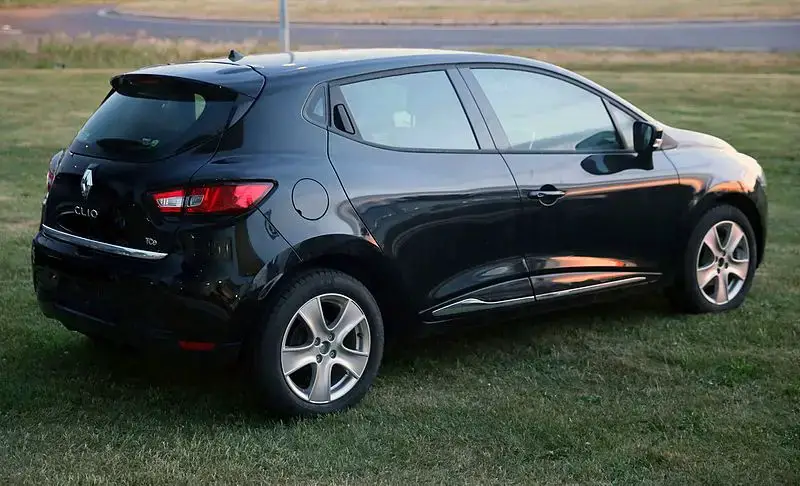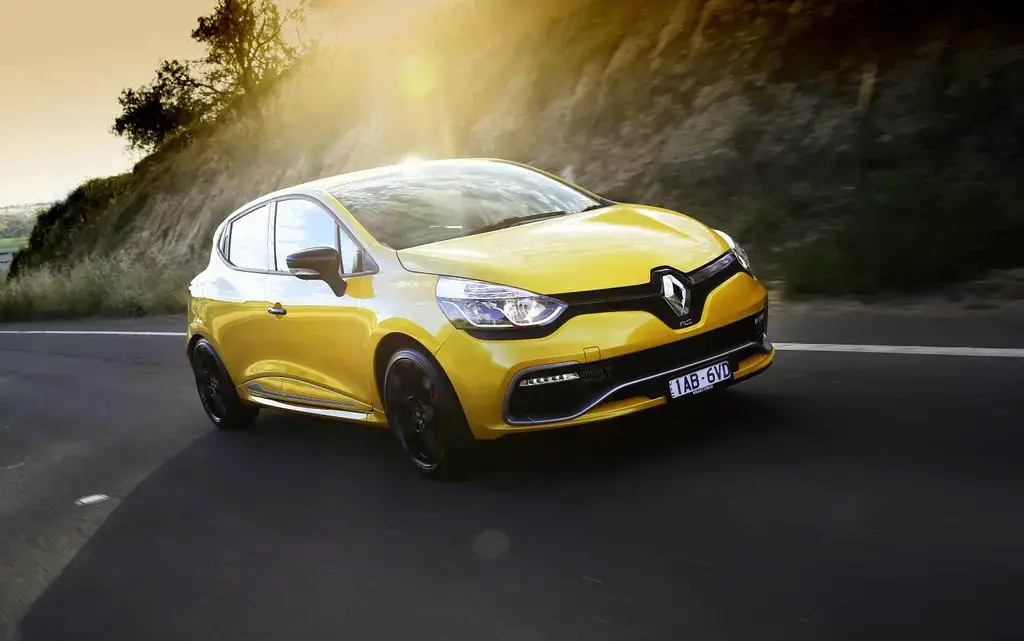Review: Renault Clio IV ( 2012 – 2019 )

Renault Clio IV, the little giant who dropped his overalls at work and put on sunglasses, and a whistle, grabbed a water bottle and went to a festival. But could he have kept his modest origins and been a good choice?
You know how it is, the Renault Clio III was too cheap a car for us europeans. And I don’t necessarily mean the price. Everything was cheap, everything was functional, and everything was made to last and to get you from A to B as cheaply as possible. But europeans didn’t want that because why pay 3000 euros for a 2010 Clio III when you can pay 3000 pounds for a 2005 E46. Plus the Renault Clio III felt like canned food: It’s good, it fills you up, it’s cheap, but you’re deeply unimpressed. It’s like a bottle of plain water without a label.
So the Renault Clio IV came with a much more dramatic and sporty feel. In fact, this supermini was one of the first cars where you had so many personalization options you felt like you were in a plastic surgery clinic. And it showed: the Renault Clio IV was a success. Even companies bought fleets of Renault Clio IVs, but that may also have been because it was cheaper than a Fiesta or Polo, but who cares? Did you sell 200 cars? You are now a winner!
Plus now the Renault Clio IV looks like a car, not like a car you drive home the day you find out you’re fired. The only real problem with the Clio IV is that it now comes exclusively in a 5-door version (the two 3-door Clio III owners will be deeply disappointed, but I don’t think they’ll be boomeranging on Instagram about it). What’s more, the rear door handles are hidden up on the windows. That means you’ll have to keep explaining to rear passengers how to open the door until you get tired of explaining for nothing and open the rear doors yourself.

Renault Clio IV Engines
Petrol
- 0.9 TCe H4Bt of 90 horsepower – An engine made legendary on the Logan II, this 3-cylinder petrol of Mercedes origin (it was initially built for the Twingo / Smart ForFour ) has proven to be reliable and muscular enough to carry the Renault Clio IV’s huge body. Very reliable engine by the way.
- 1.2 D4F of 75 horsepower – An entry-level engine for an entry-level car. If price is all that matters to you, then this engine is for you. Although, if you’re cheap, I don’t see why you’d get a new car in the first place. A decent engine for the city and that’s it, occasionally eating up coil packs.
- 1.2 TCe H5F of 120 horsepower – we’re already talking about something else. Same old D4F 1.2 MPI, just with a turbo strapped to it. Replace the coil packs and the timing belt when it’s due, and this engine will last a lot longer than you’d expect. And I’m not just saying that because it’s a Renault and consequently you’d expect it to break down right out of the factory gate.
- 1.6 Turbo RS M5Mt of 200 and 220 horsepower - This was supposed to be the Clio's finest hour, but this generation Clio RS wasn't. Basically a Renault modified MR16DDT, borrowed from Nissan, this engine suffers from oil leaks, engine knocks and premature timing chain stretch.
Diesel
- 1.5 dci K9K of 75 and 90 horsepower – The same legendary K9K that’s been fitted to everything from the Dacia Sandero to the Mercedes B Class and the Renault Clio to the Infiniti Q30. Avoid the 75 horsepower version because it has injectors made by Delphi in Romania.

Renault Clio IV Reliability Issues
- The tyre pressure sensor is a known weak point of the Renault Clio IV. You know, I’ve always found it hard to go to the petrol station once a month and check the wheel pressure. I’d even pay a few hundred euros for a computer to do that.
- Wiper blades are another topic with a habit of breaking down. If in older Renaults the problem was with the headlights, now the Clio has moved the problem to the wipers. Engines, arms, anything can fail.
- It’s not necessarily a problem as much as a “manufacturing defect”. The battery has a power monitoring sensor. If that sensor senses an anomaly in the battery it will start flashing on the dash and in extreme cases can even shut down the engine (very unlikely). Many times, however, the only thing that goes wrong is the sensor itself. Just unplug the sensor and the error goes away. Just like in life. You pull the plug and the problems go away.

Renault Clio IV Verdict
I like the Renault Clio IV very much. It’s such a fresh car that you can serve it on a plate in a fine dining restaurant. It’s a simple but good-looking car. It doesn’t want to look like what it’s not. It doesn’t want to look bigger than it is. It’s a very good city car, that’s all. What’s more, the Renault Clio IV is a very reliable car, which is very strange in a car made in a country where citizens make two revolutions an hour while using garlic sticks to satisfy their questionable orientations. For my money, that gets three “yeses”.
Which engine do I recommend? You’d think I’d recommend Mercedes’ excellent 0.9 TCe, and you’d be wrong. By far I recommend the 1.2 TCe engine, closely followed by the 0.9 TCe. I don’t recommend the 1.5 dci because this is a city car, not a commuter car.
Similar Articles

Review : Skoda CitiGO ( 2011 - 2020 )

Review : Seat Mii ( 2011 - 2020 )

Review : VW Up! ( 2011 - 2023 )
Write an answer
-
-
Georgi
Hello! How is the particle filter, how do the regenerations work? I would like to get a clio with this engine... and I will use the car 95% in the city.
-
Neil
Hello, I have a 1.5 dci 90 hp with a particle filter, I use it 90% city, I haven't had the slightest problem, the important thing is not to drive it under-revved, when I go out of town for a month the car runs great!
-
ryat
You're right. 1.5 75 hp engine. No power, you have to ask it to pull, gearbox replaced at 130,000 km. It doesn't have good visibility, it's thirsty. I have a 2017 Renault Estate Euro 6. Renault Clio 2 65 hp. It was a great car, also 1.5 dci.
- Review : Skoda CitiGO ( 2011 - 2020 ) 02 August 2025
- Review : Seat Mii ( 2011 - 2020 ) 02 August 2025
- Review : VW Up! ( 2011 - 2023 ) 16 July 2025
- November 2025
- October 2025
- August 2025
- July 2025
- April 2025
- March 2025
- February 2025
- January 2025
- December 2024
- November 2024
- October 2024
- August 2024
- July 2024
- June 2024
- May 2024
- April 2024
- March 2024
- February 2024
- January 2024
- December 2023
- November 2023
- October 2023
- September 2023
- August 2023
- July 2023
- June 2023
- May 2023
- April 2023
- March 2023
- February 2023
- January 2023
- December 2022
- November 2022
- October 2022
- September 2022
- August 2022
- July 2022
- June 2022
- May 2022
- March 2022
- April 2021
- January 2021
- December 2020
- November 2020
- October 2020
- September 2020
- August 2020
- July 2020
- March 2020
1.2 tce from 2016 edc gearbox?